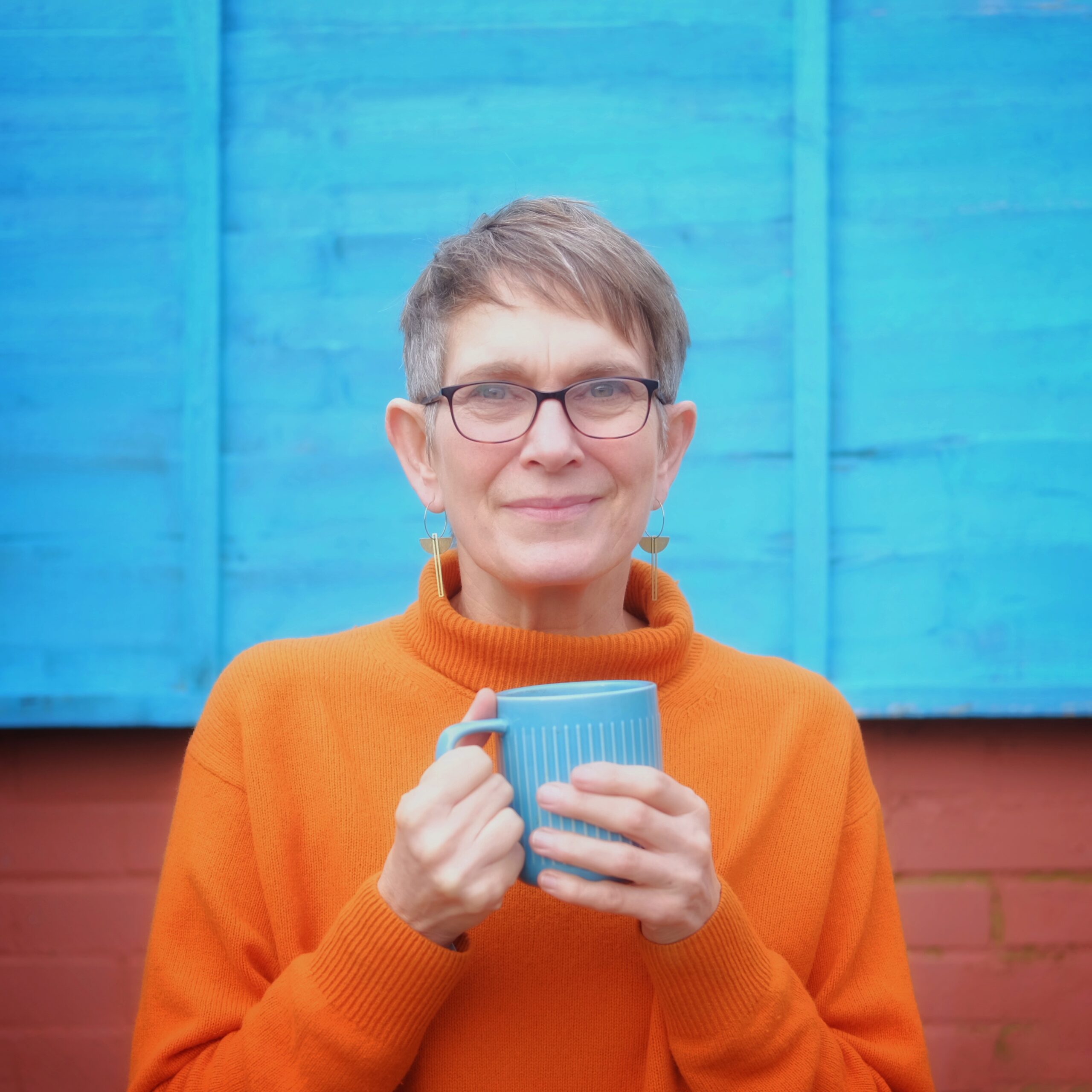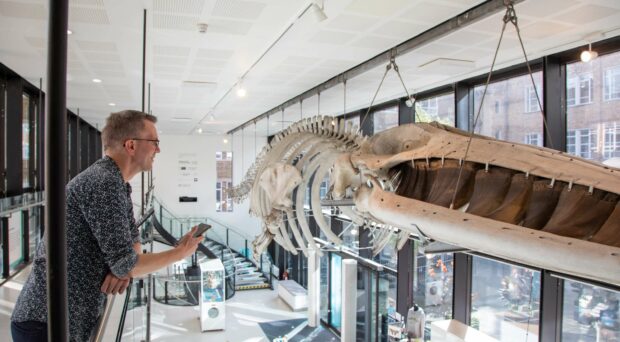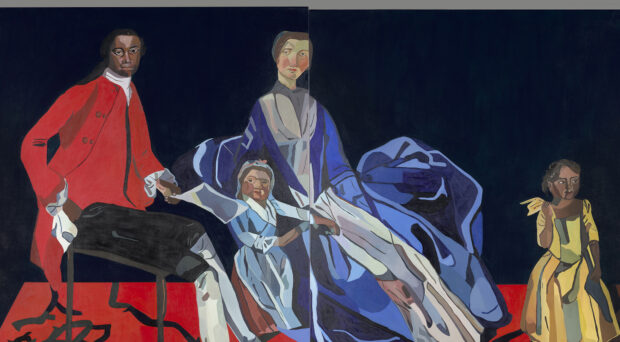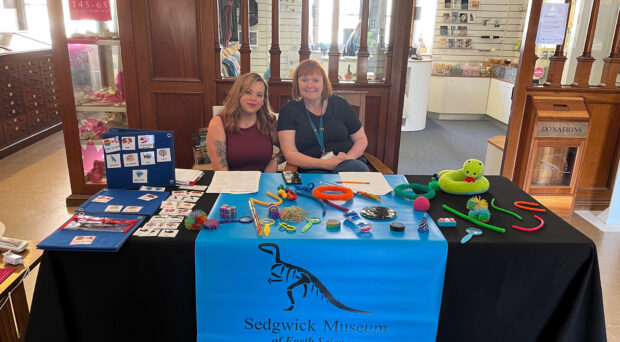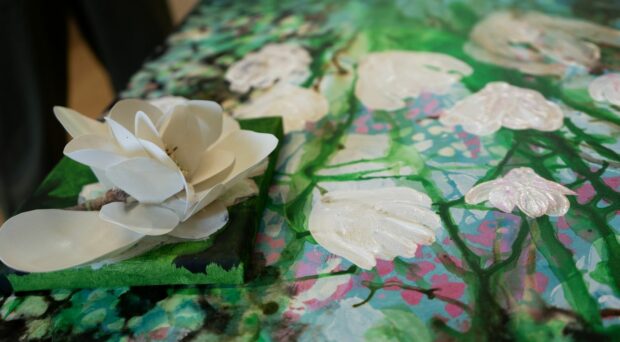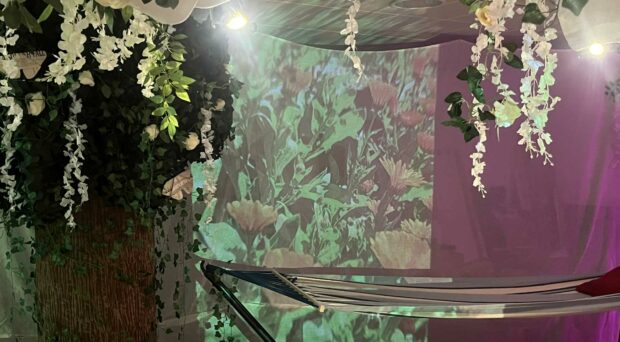At the end of last year, we introduced a new student placement in collaboration with Cambridge University Hospitals, exploring how museum objects and artworks can support therapy for stroke rehabilitation patients.
The placement was an exciting step forward in our ongoing collaboration with the Occupational Therapists at Addenbrooke’s Hospital in Cambridge, which has developed over the last three years.
In this blog, I speak to Abigail Aitkenhead and Isobel Parvin from Cambridge University Hospitals, about how our collaboration developed and what outcomes the placement had, both for patients and for our practice.
Building a collaboration
Abigail Aitkenhead, Divisional Service Lead Occupational Therapist for Acute Services at Cambridge University Hospitals, is an experienced Occupational Therapist in both inpatient and community settings. She is a clinical specialist in Older People and in addition has worked in stroke rehabilitation for many years. She uses her holistic approach to encourage patients to engage in meaningful occupations to enhance recovery. She is currently one of the OT Department Leads with a responsibility for training.
Ruth: How did this collaboration begin and what drew you to the opportunity?
Abigail: Like any good collaboration, ours began with a conversation, curiosity, and mutual respect for each other’s worlds. It was the summer of 2022 when I met movement and dance therapist Filipa Pereira-Stubbs, who is involved with both Cambridge University Hospitals (CUH) and the University of Cambridge Museums (UCM). As an Occupational Therapist (OT), I was intrigued by how her expertise could intersect with our department’s work. Filipa introduced me to you, Ruth, working in inclusion for the Museums, and we began discussing how music and art might enhance OT treatment sessions in the hospital.
Ruth: How did you get your OT colleagues involved, and what challenges and opportunities did you experience in this?
Abigail: We trialled group sessions with older patients in the ward dayrooms, combining music and art. What we witnessed through the sessions was the unfolding of crumpled bodies and the uplifting of spirits as patients engaged with discussions of Monet and Renoir, experiencing a sense of escapism. While the benefits—physical, cognitive and social—were evident within the 40-minute sessions, they were difficult to quantify. Additionally, some OTs found it challenging to prioritize these sessions alongside assessments critical for discharge planning. This tension sparked further conversations with Ruth about integrating museum collections more effectively into therapeutic interventions.
Carving out time to explore this further resulted in some Saturday morning workshops at the Fitzwilliam Museum. Ruth curated a selection of art and artefacts from the collections, and a small group of keen OTs explored how these could serve as mediums for therapy. The workshops sparked excitement as we considered how paintings like Lowry’s could assess cognition by counting chimneys or characters, or how a Samuel Palmer might evoke storytelling and language assessments. We pondered how discussing a Ford Madox Brown could open conversations about patients’ feelings about returning home. The potential seemed limitless.

Ruth: How did the idea of a student placement at the University of Cambridge Museums come about?
Abigail: The challenge was inspiring OTs to adopt this resource confidently. Despite developing action plans, the acute setting’s reductionist approach made gaining traction difficult. A breakthrough came when a student OT who attended the Saturday morning museum workshops proposed an emerging student placement with the museums. With support from CUH, Coventry University, and the University of Cambridge Museums, this vision became a reality, and Izzy started her placement in September 2024.
Ruth: As the placement supervisor, what were the outcomes of the placement?
Abigail: Izzy’s placement became an exciting experiment, with dedicated time to explore handling collections and develop skills in using them therapeutically. Patients engaged with items ranging from feathers to prehistoric flints, from Roman oil lamps to seashells. Weekly supervisions with Ruth, Izzy, and myself helped articulate key concepts. For the museums, the focus was on the artefact; for the therapist, it was on therapeutic application; for the patient, it was the interaction itself. This triad reflected the core of Occupational Therapy: person, occupation, and environment.
The shift in the artefact’s environment—from a glass case to a hospital bed—was significant. The OT acted as the intermediary, bridging the gap. Anecdotal feedback from patients highlighted how stimulating and restorative these sessions were, bringing interest to otherwise monotonous days in bed. Handling objects encouraged repetitive movements, exercising muscles, while discussions and visual cues stimulated cognition. Creativity blossomed as patients painted or drew the objects. Though primarily focused on patient wellbeing and volition, the potential exists to measure broader outcomes in future work.
Ruth: What’s next?
Abigail: We are continuing this pioneering exploration and are brimming with ideas for what could come next. Challenges are ongoing in the fast-paced hospital setting, especially in encouraging therapists to think differently about therapeutic mediums. However, the collaboration between museum, therapist, and patient has proven its incredibly worthwhile, highlighting mutual benefits and the importance of teamwork in uncharted territory.
Thank you to the University of Cambridge Museums for joining us on this journey.
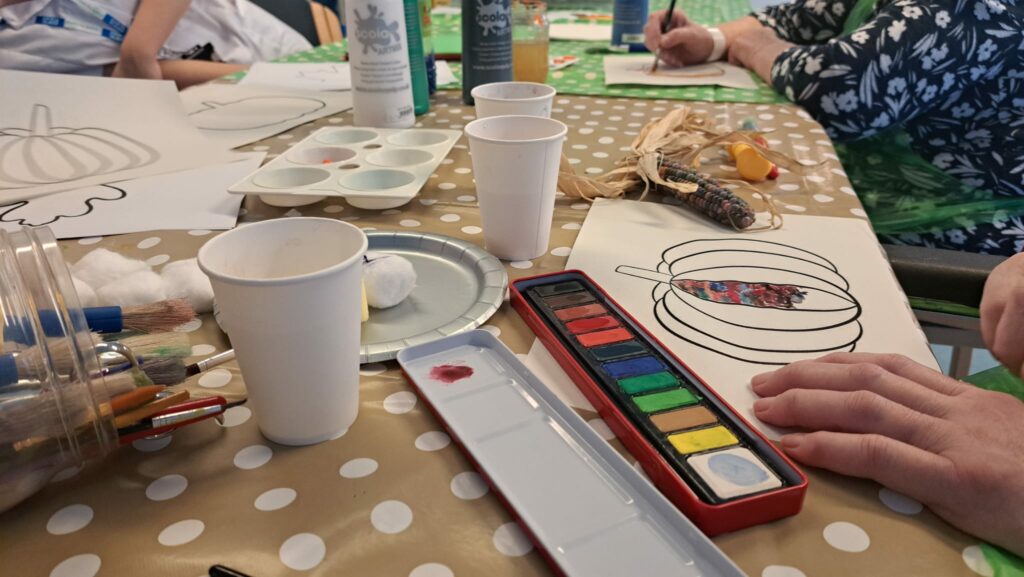
Supporting stroke patients
Isobel (Izzy) Parvin is Apprentice Occupational Therapist at Cambridge University Hospitals and undertook a placement with the University of Cambridge Museums in autumn 2024. She graduated with a fine arts degree in 2020 and has a special interest in how the cultural sector can support health and wellbeing.
Ruth: As an apprentice OT, what were your ambitions for a hospital-based placement with the University of Cambridge Museums?
Izzy: As an Apprentice Occupational Therapist at CUH, we are required to go on a placement. Having attended one of the Saturday morning workshops, I was keen to explore overlaps between the two worlds. I wondered if I could in fact use the artefacts, combined with my background in art to enhance therapeutic treatment as part of a placement. After much discussion and exploration with the Hospital, my college and the UCM, we arrived at the ambition of piloting the use of museum resources in stroke rehabilitation sessions. We wanted to explore how they might enhance patients’ recovery in terms of cognitive skills, physical ability, mood, and overall engagement.
Ruth: Why did we focus on stroke rehabilitation ?
Izzy: For stroke rehabilitation patients, OTs help restore lost skills and independence through activities that rebuild muscle strength, improve coordination, or adapt tasks to make them manageable, such as using adapted cutlery or teaching one-handed dressing techniques.
The UCM placement aimed to enhance this process by integrating collections into therapy sessions, offering patients a richer, more engaging experience that could boost motivation and wellbeing. Rehabilitation for people who have had strokes is sometimes quite a long process. As such, I was able to build relationships with people during my placement helping me to understand the impact introducing museum collections could have over time.

Ruth: Can you give us some examples of how stroke affect a person and how you used the collections to support rehabilitation?
Izzy: Stroke often causes weakness or sensory loss on one side of the body, significantly affecting daily activities. It can also impact cognition and can have a detrimental effect on mood and a patient’s wellbeing. So I used the objects to support people in the use of their upper limb and cognition, and promote their wellbeing.
Upper limb rehabilitation
Upper limb rehabilitation involves exercises to regain movement and sensation, often through techniques that stimulate neuroplasticity, where the brain reorganises itself to recover lost functions. Sensory stimulation—such as handling textured objects—can also help restore sensation.
For instance, a Roman oil lamp from the Museum of Archaeology and Anthropology, made of textured terracotta, encouraged patients to reach, grip, and turn their hands while examining its intricate carvings. These movements aligned with key therapeutic exercises, while the object’s historical significance captured patients’ interest, making therapy more enjoyable.
Similarly, a collection of shells and fossils inspired by Mary Anning from the Sedgwick Museum of Earth Sciences prompted patients to perform therapeutic movements naturally. One patient lifted a shell to her ear, unknowingly completing her first independent arm raise. Another patient, a former teacher familiar with Mary Anning, engaged in conversation about her work while completing exercises. These interactions made therapy sessions feel less clinical and more meaningful.

Cognition
Stroke can also impact cognition, including visual neglect, where patients ignore one side of their body or environment. This can hinder daily activities and pose safety risks, such as forgetting to check for traffic. OT addresses this by teaching patients to consciously scan their neglected side, often using visual tasks.
Prints of paintings from the Fitzwilliam Museum, like Butterflies and Other Insects by Jan Van Kessel, were used to encourage visual scanning. Patients counted butterflies or assembled jigsaw puzzles made from the prints, gradually improving their ability to notice and attend to their neglected side. Over time, patients became more aware of their neglect and took proactive steps to address it.

Wellbeing
Prolonged hospital stays often lead to ‘occupational deprivation’, where patients are unable to engage in meaningful activities, impacting their mood and motivation. Museum objects provided a way to counter this by connecting patients to their interests and identities.
For example, a patient who loved the Botanic Garden painted a glass gem corn in an art session, reconnecting with her passion despite physical limitations. Another patient bonded with a fellow participant over their shared admiration for artist Georgia O’Keeffe during a session using a colour wheel from the Whipple Museum of the History of Science. These activities offered a mental respite from the hospital environment and fostered a sense of normalcy and joy.

Ruth: What are your reflections at the end of this pilot?
Izzy: The project demonstrated how museum collections could enrich stroke rehabilitation by combining therapeutic benefits with engaging, meaningful activities. Patients were more motivated and absorbed in sessions, often unaware of how much hard work they were doing. This approach aligns with the core mission of OT: using meaningful occupations to support recovery, while also fulfilling the museums’ goal of fostering appreciation for and engagement with their collections.
By integrating these two fields, the project created a unique and impactful therapy experience, benefiting both patients and staff. It highlighted the potential for future collaborations between healthcare and cultural institutions to enhance patient care.

